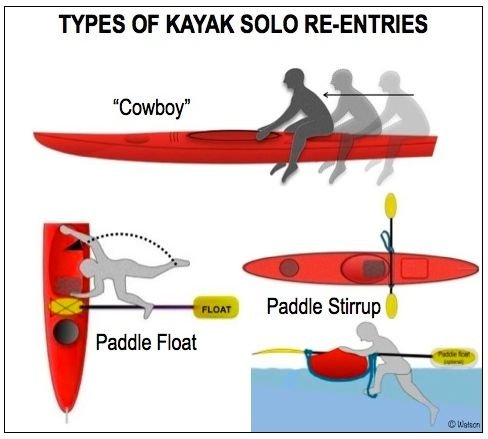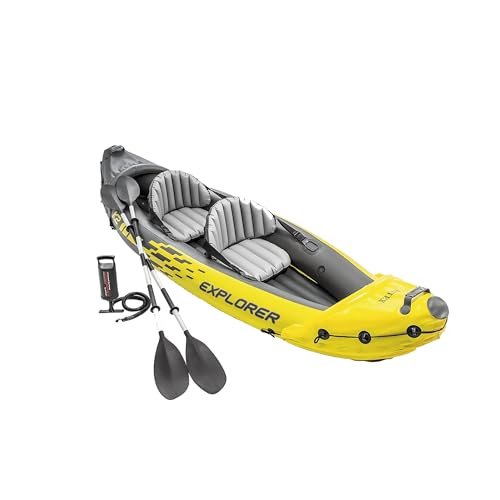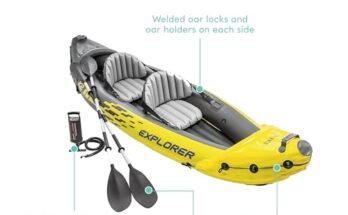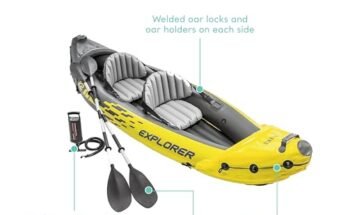Have you ever dropped your kayak paddle in the water and noticed it didn’t sink? It probably floated right back to the surface, making it easy for you to grab.
But why do kayak paddles float instead of sinking? Understanding this simple fact can make your time on the water safer and more enjoyable. You’ll discover the surprising reasons behind this floating feature—and how it benefits you every time you paddle.
Keep reading to find out what makes your kayak paddle stay afloat!

Materials Of Kayak Paddles
Kayak paddles float because of the materials used to make them. These materials are light and help keep the paddle on the water surface. Understanding these materials helps explain why paddles do not sink easily.
Many paddles combine different materials for better strength and buoyancy. This mix makes paddling easier and more efficient on the water.
Lightweight And Buoyant Materials
Lightweight materials help keep the paddle afloat. They also reduce fatigue during long paddling trips. Common lightweight materials include foam and plastic. These materials trap air, which increases buoyancy.
- Foam cores inside paddle blades
- Plastic blades made from polyethylene
- Aluminum or fiberglass shafts
- Carbon fiber shafts for lightweight strength
Common Paddle Materials
Different paddles use a mix of materials for durability and performance. The table below shows common materials and their features.
| Material | Weight | Buoyancy | Durability |
|---|---|---|---|
| Plastic | Heavy | High | Good |
| Fiberglass | Medium | Medium | Good |
| Carbon Fiber | Light | Low | High |
| Aluminum | Medium | Low | High |
| Foam Core | Light | Very High | Medium |
Principles Of Buoyancy
Kayak paddles float because of the science of buoyancy. Buoyancy is the force that pushes objects up when placed in water. This force helps objects stay on the surface instead of sinking.
Understanding buoyancy helps explain why some objects float while others sink. It depends on how much water an object can push away and the weight of the object itself.
How Buoyancy Works
Buoyancy works by pushing an object upward in water. Water pushes up because the object pushes water out of the way. This upward push is called the buoyant force.
If the buoyant force is stronger than the object’s weight, the object floats. If the object is heavier, it sinks. Kayak paddles float because the water pushes up more than their weight.
Role Of Density In Floating
Density is how much mass an object has in a space. It is the mass divided by volume. Objects with lower density than water float on it.
Kayak paddles are made from materials with low density. These materials weigh less than the water they push away. This helps the paddle stay on the surface.
- Water density is about 1 gram per cubic centimeter
- Materials like plastic and foam have less density
- Low-density materials help objects float easily
Design Features That Aid Floating
Kayak paddles float because of special design choices. These features help keep the paddle on the water surface.
Two key parts that help paddles float are the blade and the shaft. Each part uses materials and shapes to stay light and buoyant.
Blade Shape And Size
The paddle blade is wide and flat to push water effectively. Its shape also traps air, helping it float.
Many blades have a hollow or foam core. This keeps the blade light and less dense than water.
- Wide blades increase surface area and buoyancy
- Hollow or foam cores reduce weight
- Rounded edges help keep air pockets
Shaft Construction
The shaft is the long part you hold. It is made from light materials like aluminum or carbon fiber.
Some shafts have foam inside or are hollow. This design helps the shaft float easily if dropped.
- Lightweight materials reduce overall paddle weight
- Foam-filled shafts add buoyancy
- Hollow shafts trap air to float better

Comparing Floating And Sinking Paddles
Kayak paddles are essential tools for navigating water. Some paddles float, while others sink. Understanding why they behave differently helps in choosing the right paddle.
Floating paddles are often preferred by kayakers. They are easier to retrieve if dropped in water. Sinking paddles, on the other hand, can be a challenge to recover.
Materials That Sink
Some materials used in paddles are dense. These materials tend to sink in water. Metal and certain plastics are examples.
Paddles made with these materials are heavier. This weight causes them to sink quickly if dropped.
- Metal shafts add weight
- Dense plastic blades
- Heavy composite materials
Impact Of Water Absorption
Water absorption can affect paddle buoyancy. Some materials soak up water, increasing their weight. This makes them sink.
Wooden paddles can absorb water if not sealed properly. This absorption reduces their ability to float.
- Unsealed wood absorbs water
- Increased weight causes sinking
- Proper sealing prevents absorption
Safety Benefits Of Floating Paddles
Kayak paddles that float help keep you safe on the water. They do not sink if you drop them.
This feature makes it easier to find and grab your paddle quickly. It also helps prevent accidents and delays.
Ease Of Retrieval
Floating paddles stay on the water surface. You can easily reach them if you drop one.
This means less time spent searching and more time kayaking safely. You avoid panic and stay in control.
Enhanced Visibility
Many floating paddles come in bright colors. These colors stand out against the water.
Bright paddles make it easier for you and others to spot them quickly. This is helpful in rough or low light conditions.
Maintenance Tips To Keep Paddles Buoyant
Kayak paddles float because they are made from lightweight, buoyant materials. Keeping them clean and in good shape helps them stay afloat. Proper care extends the life of your paddles and prevents sinking.
Simple maintenance steps can keep your paddles light and easy to use. Regular cleaning and fixing damages improve their buoyancy and performance on the water.
Cleaning And Storage
Cleaning paddles removes dirt, salt, and grime that can wear down materials. Proper storage protects paddles from damage and warping.
- Rinse paddles with fresh water after each use.
- Use mild soap and a soft cloth to clean stubborn dirt.
- Dry paddles completely before storing to prevent mold.
- Store paddles indoors, away from direct sunlight and heat.
- Keep paddles off the ground to avoid warping.
Repairing Damage
Small cracks or chips can let water in, making paddles heavier and less buoyant. Fixing these issues quickly helps paddles stay afloat.
| Damage Type | Repair Method | Effect on Buoyancy |
| Small cracks | Use waterproof epoxy or resin | Prevents water absorption |
| Chipped edges | Sand smooth and seal with varnish | Maintains smooth surface |
| Loose paddle blades | Tighten screws or replace parts | Ensures stability and float |

Frequently Asked Questions
Why Do Kayak Paddles Float On Water?
Kayak paddles float because they are made from lightweight, buoyant materials like plastic or aluminum. These materials displace enough water to keep the paddle afloat, preventing it from sinking when dropped in water.
Are All Kayak Paddles Designed To Float?
Most kayak paddles are designed to float, but not all. Manufacturers use buoyant materials to ensure safety and convenience during kayaking activities, but some metal or heavier paddles may sink if dropped.
How Does Paddle Design Affect Flotation?
Paddle design affects flotation through the choice of materials and blade shape. Hollow or foam-filled shafts increase buoyancy, while wide blades help distribute weight, making it easier for the paddle to stay afloat.
Can Paddle Float Bags Improve Flotation?
Yes, paddle float bags attach to paddles to increase buoyancy. They provide extra support in emergencies, helping kayakers recover or prevent paddles from sinking in rough water.
Conclusion
Kayak paddles float because they are made from light materials. These materials help keep paddles on water, not sink. Floating paddles make kayaking safer and easier. You can find your paddle quickly if it falls in water. This simple design helps many kayakers enjoy their time.
Remember, floating paddles reduce the chance of losing equipment. So, choosing the right paddle matters for your kayak trips. Floating paddles improve safety and convenience every time you paddle.



